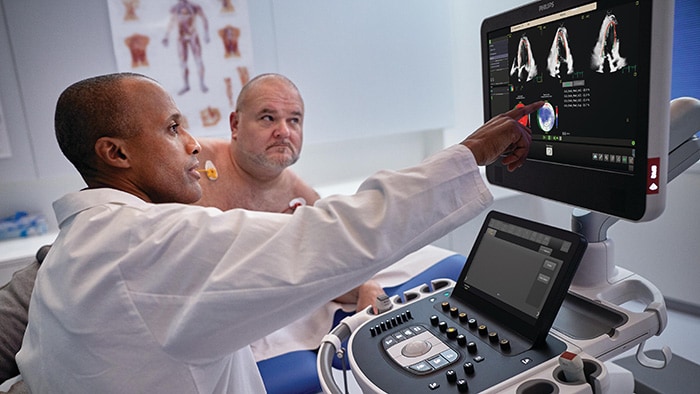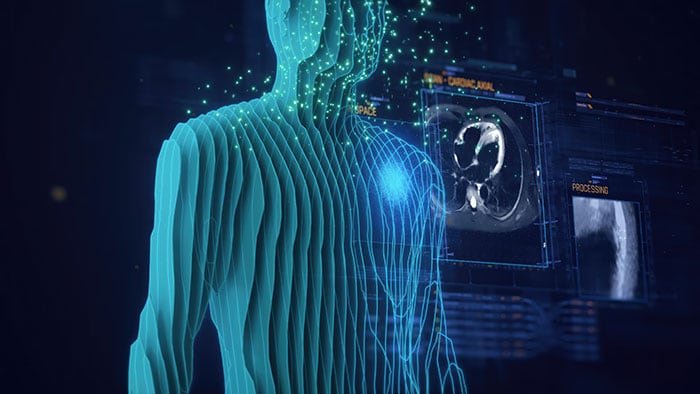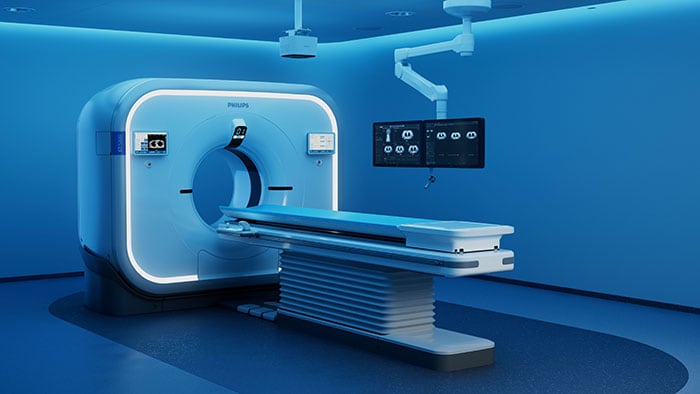Spotlight: how cutting-edge health technologies are revolutionizing diagnosis and treatment for top athletes
Aug 07, 2024 | 5 minute read
In the high-stakes world of professional sports, the margin between victory and defeat can often hinge on the health and physical condition of an athlete just as much as their talent and ability. As the world tunes in to watch its top athletes compete, behind the scenes, revolutionary medical technologies are helping competitors reach and maintain peak performance. From precision diagnostics to advanced treatment modalities, these innovations are not only enhancing performance but ensuring quicker recovery times and prolonged careers.
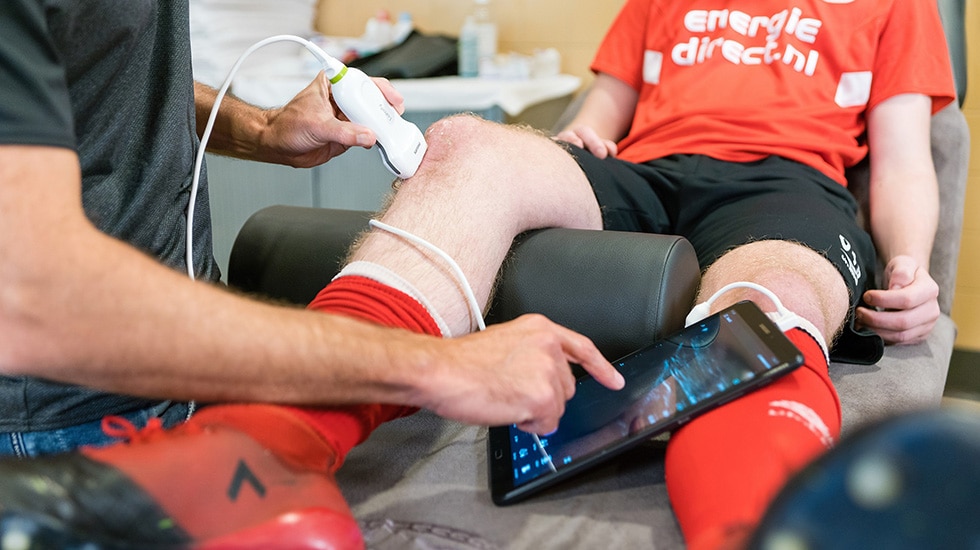
Athletes competing at a professional level often face high injury rates due to physical demands. The spotlight is now shone on that behind-the-scenes care to help evolve how best to diagnose, treat and manage competitors’ health and well-being.
Precision diagnostics
One of the pivotal advancements shaping the landscape of athlete healthcare is precision diagnostics. Technologies like advanced imaging systems from Philips allow medical professionals to delve deeper into athletes' physiology than ever before. MRI machines equipped with cutting-edge software can provide detailed insights into joint health, muscle integrity, and even detect subtle injuries that traditional methods might miss. In addition, ultrasound – in particular portable ultrasound – is being used for musculoskeletal (MSK) imaging to produce high-definition images to help detect soft tissue injuries in elite athletes.
“Imaging plays an important role in diagnosing and treating sports injuries because it helps healthcare providers get a detailed picture of the injury and develop the best treatment plan,” said Dr. Atul Gupta, Chief Medical Officer, Diagnosis and Treatment at Philips and practicing interventional and diagnostic radiologist. " Magnetic resonance imaging (MRI) and ultrasound are the tools of choice for diagnosis for most soft tissue injuries, such as muscles, tendons, ligaments, and cartilage and is the most sensitive imaging technique for bone stress injuries.”
When done at the right time with the right equipment, imaging can lead to an early and accurate diagnosis, which is crucial for helping athletes return to action as soon as possible.
Remote monitoring and wearable health tech
Another trend gaining traction is the use of wearable technology for remote monitoring. Many athletes, regardless of physical condition, are equipped with smart devices that track vital signs, sleep patterns, and even biochemical markers in sweat. These data points can be analyzed in real time, providing coaches and medical staff with actionable insights into an athlete's physical condition and recovery progress.
Recent research suggests that the risk of atrial fibrillation (AF) development may be significantly greater in athletes than non-athletes [2], which makes ECG analysis of athlete cardiac data more essential than ever. Thanks to its industry-leading [3] remote cardiac monitoring technology and cloud-based, AI-powered deep neural network learning model, Philips is leading the charge in the next milestone of wearable cardiac monitoring technology. Beyond monitoring for cardiac arrhythmias, Philips is also a leader in research of predictive ECG-based biomarkers, a technology which may lead to earlier detection of disease states, optimized patient monitoring and clinical management.
“If applied to athletes, this technology offers the potential to monitor multiple heart rate (HR) parameters, including resting, maximum, sustained, and recovery rates during training sessions, and heart rate variability. By amalgamating these HR parameters and correlating them with athletic performance, we may be able to direct athletes on how best to train in order to achieve peak results while minimizing the risk of overtraining.” explained Manish Wadhwa, Chief Medical Officer for Philips Ambulatory Monitoring & Diagnostics.
Personalized treatment plans
Once reserved for the elite few, personalized treatment plans are becoming the norm. Using data analytics and AI-driven algorithms, healthcare teams can tailor rehabilitation programs and recovery protocols specific to each athlete's unique physiology and injury profile. This approach can speed up recovery times and reduce the likelihood of re-injury.
"By combining data from wearable sensors with insights from imaging technologies, we can create bespoke rehabilitation plans," said Gupta. "This personalized approach allows us to optimize recovery timelines and get athletes back in peak condition swiftly."
Winning means being prepared
Even beyond managing existing conditions or injuries, there is always a looming risk of the unexpected, particularly amid vigorous physical activity. For nearly 10 years, Philips has been on the sidelines supporting major sports teams around the world, providing imaging technology to help diagnose sports injuries quickly.
In the Netherlands, Philips teams up with PSV Eindhoven, one of the country’s premier soccer clubs, to leverage new imaging technologies when the Eredivisie club was the first in the world to use Philips’ portable ultrasound, Lumify to assess player injuries anywhere they happened. Lumify handheld ultrasound is designed to help make injury diagnoses even faster and is particularly useful in an environment where immediate injury analysis is needed to get athletes back into play. With Lumify, PSV team doctors were able to make diagnoses and decisions much faster, anywhere in a sports complex and even when traveling to remote training locations with no hospital nearby, enabling better care to players and the ability to address injuries as soon as they occurred.
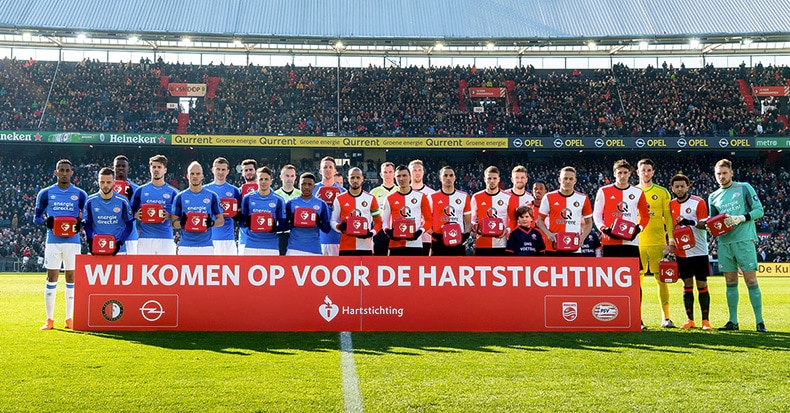
Sudden cardiac arrest (SCA) is the most common medical cause of death in athletes [4], though rare and nearly impossible to predict. Even athletes in their prime are not immune to predisposed genetic conditions that may go undetected until they cause SCA. So, particularly in high-profile, highly attended athletic events and competitions, preparedness is paramount.
With more than 2.5 million AEDs sold, Philips AEDs can be found in sports complexes, airports, aboard major airlines, in Fortune 100 companies, shopping malls, and multiple public venues around the world, providing the ability to help someone with a suspected sudden cardiac arrest (SCA) within minutes. Studies show that CPR and a shock from a defibrillator within minutes of collapse can increase survival rate by 90% [5].
Future outlook
Looking ahead, the integration of artificial intelligence promises to further revolutionize athlete healthcare. AI-powered predictive models can anticipate injury risks based on historical data, biomechanical assessments, and even environmental factors. This proactive approach not only mitigates injury but also enhances performance by fine-tuning training regimens in real time.
“Looking forward, the next evolution of working with AI could be applied to a whole new era of predictive sports medicine," added Gupta. "Imagine the possibility of being able to prevent injuries before they occur, thereby extending an athlete's career and maximizing their potential."
As we witness athletes achieve new heights of excellence on the global stage, it's clear that behind their triumphs lies a network of cutting-edge health technologies driving their success. From the sidelines to the training rooms, advancements in health tech, such as those pioneered by Philips, are redefining the standards of care for athletes worldwide. As these innovations evolve, the future holds promise for even greater breakthroughs in athlete healthcare, ensuring that tomorrow's champions can perform at their best, safely and sustainably.
Sources [1] https://bjsm.bmj.com/content/bjsports/early/2022/12/04/bjsports-2022-106155.full.pdf
[2] Jawdat Abdulla, Jens Rokkedal Nielsen, Is the risk of atrial fibrillation higher in athletes than in the general population? A systematic review and meta-analysis, EP Europace, Volume 11, Issue 9, September 2009, Pages 1156–1159, https://doi.org/10.1093/europace/eup197
[3] Philips ECG solutions (formerly BioTelemetry) is #1 in cardiac ambulatory monitoring, largest cardiac service network with over 1 million patients per year and 33,000 referring physicians. Data on file.
[4] https://www.bangkokhearthospital.com/en/content/sudden-cardiac-death-scd-in-sports-the-most-common-medical-cause-of-death-in-athletes
[5] Sudden Cardiac Arrest Association, About AEDs, https://associationdatabase.com/aws/SCAA/pt/sd/news_article/43774/_PARENT/layout_details/false



